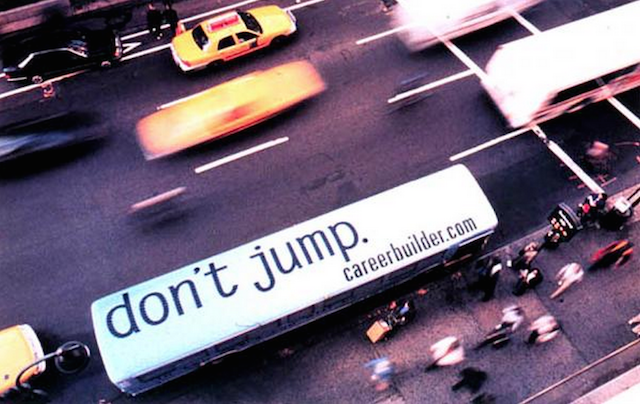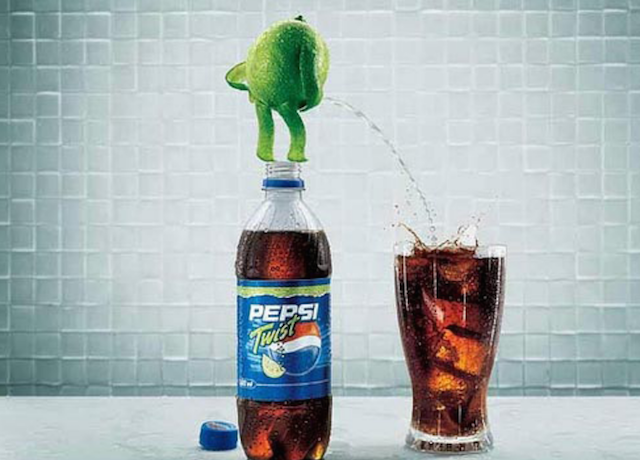 Anna Łowczowska
created
edited
Anna Łowczowska
created
edited
Shockvertising – does it have more pros or cons?
Back to list of articlesMarketers face the double challenge of getting their message to stand out in a world crowded with advertisements and getting that message to stick in consumers’ minds. Using surprising and unusual images is probably the oldest trick in the bag for this task and we have all seen ads that succeed by giving us an unexpected twist.

So trying something unusual, even strange, can be a refreshing break from the ordinary in your marketing strategy. But you have to remember that there’s good kind of strange and the other kind of strange, which often leaves us feeling uneasy and unsure of how we should react. The first one usually tries to make itself easy to remember by bringing a smile to your face. The other is usually deliberately provocative and tries to use shock value to burn a place in your memory.
Benneton and Calvin Klein were early pioneers of “shockvertising” with images unlike any we had seen before in mass market advertising. It’s hard to deny the success of the ads since both companies enjoyed the magnified publicity that the images got in other media.
It’s easy to get attention
The formula for this type of marketing is rather simple. Take a controversial or taboo subject - religion, sex, violence - and create images that run right up to the line of good taste and then stick a foot over it. If you want people to talk about you, then you have to give them something to talk about and an image with just a little too much blood or skin is just the thing to do it in today’s world.
To achieve this, boring and ordinary are out and being little bit weird or strange is in. Quirky ads stick in our minds long after a simple, straightforward message has been forgotten. Getting people to remember your ad for the right reasons is often about finding that fine balance between pushing boundaries enough to impress consumers with your creativity and taking a step too far into an awkward and uncomfortable zone that makes people who see the ad say “What were they thinking?” An advertisement can be clever and make a great impression but the same ad, pushed just a little further, can make us think that someone at the ad agency has lost their mind.
Just right or too far?
We’ve put together a few examples of marketing campaigns that are just a bit on one side of this divide or the other. Are these successful advertisements that put a lasting and positive impression in your mind or have they gone too far and made you cringe a bit? You be the judge.

Ad: 'Just' liquid hand wash
Let’s start with cockroaches and a baby. The image is obviously powerful and you get the message right away - if you don’t use Just handwash, you’re still dirty. But then, there is the idea of putting babies and roaches together. Hmmm. Does it make you want to buy Just to keep the roaches away or does it make you never want to think of Just again?

Ad: WWF
The ad world isn’t just businesses trying to attract customers. Organizations and charities like the WWF also have a message to spread. Here’s a striking image that clearly encapsulates part of their mission - to stop the trade in exotic and endangered animals. Is blood on the floor an unnerving but appropriate way to illustrate what happens or is it the wrong way to present the issue? You decide.

Ad: Careerbuilder.com
Or how about this one, from the online job site careerbuilder.com. It’s a nice, simple image with just a two word slogan and the website that they want you to visit. It makes a joke by tapping into the frustration felt by job seekers after getting a mountain of rejection letters but, wait, when did suicide become the stuff that jokes are made of? Is it ok to smile at this one?

Ad: Pepsi Twist
Here’s an ad from Pepsi showing you just where that “Twist” comes from. Is it cute and clever or does it leave the wrong, um, taste in your mouth?
Which way is right for you?
Of course this is just a tiny sample of something we see all the time but we rarely think about how a great ad could have been ruined by going a little further or how an offensive ad could have been scaled back just a bit to make something memorable for the right reasons. Marketers often walk a very fine line to get maximum reaction to their work and knowing exactly where that line is can make all the difference between a huge success and a massive failure.
What about you and your brand? Would you feel comfortable with any of the above ads if you were part of the company behind them? Before you use this kind of ad take under consideration that:
- you risk your reputation and brand image,
- you can offend your customers,
- the attention gained doesn't have to lead to sales increase,
- jump in sales is only short-term,
- this kind of promotion is about building a brand, not selling a particular product,
- this kind of promotion doesn't build a long-term relationship with a consumer,
- you can even pay a fine,
Sure, there is a slice of the market that is attracted to such edginess but what about the great masses of people in the middle who mostly play it safe when making purchasing decisions - do you want to risk permanently losing them with something that goes too far?
Deciding what’s right for you in this high-risk, high-reward dilemma isn’t easy so take time to consider the points raised here and do your best to do the right thing for your brand!

